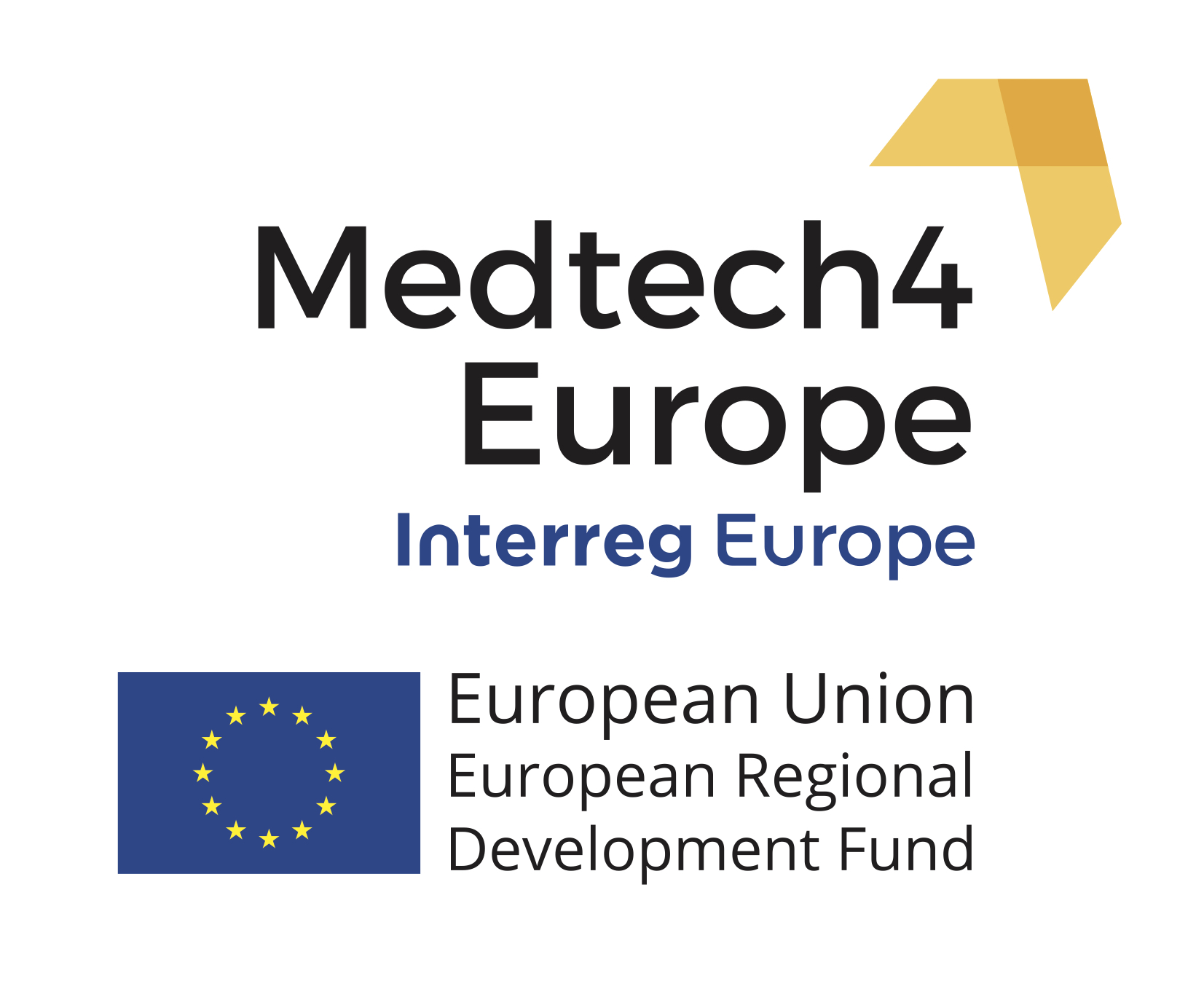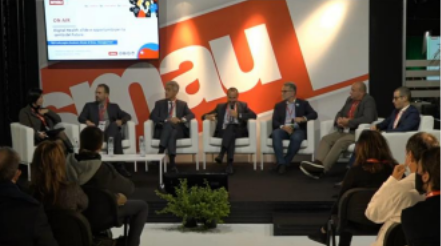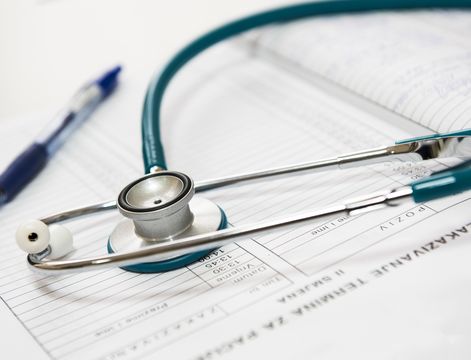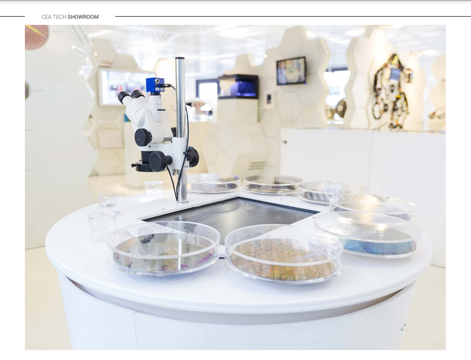Report on the closing events of M4E I.
The final conference of the Medtech4 Europe Interreg Europe project took place on 14-15 June 2022. The event took place in Milan, Italy.
In this context, public authorities at regional level need to contribute to strengthen the Research, Development and Innovation (RDI) ecosystem in favour of innovative medical technology industry in generating economic growth, creating jobs and providing solutions for patients and healthcare systems in the regions.
Our objective is to improve public policies in favour of RDI facilities to be more adapted to the specificities of the medtech sector.
Thanks to the exchange of experience between regions and identification of best practices, the partners will be able to implement new solutions to improve their regional policies, in particular:
€1,634,534.00
Research and innovation
The 1st priority axis of the Rhône-Alpes ERDF OP focuses on innovation to tackle the main societal issues. Through the specific objective 1.1 (related to the IP 1.A), it supports the increase of research offer and development of innovation for companies in the fields of smart specialisation by settling or reinforcing technological and innovation infrastructures (technological facilities, test means…) and associated skills and services dedicated to achieve RDI projects of regional SMEs (technological readiness level 3 to 6). The OP supports the reinforcement of knowledge production in the 7 domains of smart specialisation of the regional S3 among which the personalised health. It enhances projects collaboration between public research institutions and industrial sectors.
A call for proposal has been settled to that end by financing RD equipment acquisitions, technological skills (human resources, technical knowledge, patents…), external expertise, dissemination actions.
Despite strong involvement of the regional authorities, SMEs of the medtech sector still keep away from RDI facilities. The sector is composed of numerous small firms operating in various domains. RDI facilities exist but they are highly specialised and do not cover all the topics. The addressed policy instrument has to be improved to create better conditions to adapt the RDI ecosystem and facilities to the specificities of medtech sector by encouraging cross-sectorial and multi-disciplinary approaches.
Priorities of the ERDF OP South Netherlands are based on the RIS3 South: to further develop and become a top economic world class region. To reach that goal, one of the clusters of national importance to foster is the Life Sciences and Health Cluster. Brightlands Maastricht Health Campus (BMHC) is an ambitious development in a triple helix context for which investments in high end, top excellence R&D Infrastructures have been decided to contribute to have a whole value chain for medtech. BMHC aims to accelerate the excellence growth of its life science tenants as R&D institutes and industry. The focus lies on entrepreneurial environment within a research and clinical climate. The campus infrastructures encourage collaboration among the tenants. Shared buildings support open innovation, knowledge sharing and cross over activities. Goals within the RIS3 are declined into programme for Life Science and Health South Netherlands and a biomedical materials and regenerative medicine roadmap. It is the basis for the implementation of relevant project in the OP. The process will carry on with inputs from European best practices to reach excellence.
Priorities concerned: P1B1, strengthening and broadening open innovation system in cross overs between national and international top clusters, aiming at a larger SME participation / P1B2, strengthening the valorisation potential of SMEs within national and international top clusters to contribute to the solution of societal challenges.
Objective: EDIOP intends to support strengthening of research and innovation capacities to reach European level, and especially in those scientific domains, where international excellence based cooperation is intensive (as in medical technologies). Main prerequisite of the above actions is to be in direct linkage with national S3 strategy.
Characteristics: as an ERDF co-financed programme, in framework of international excellence based initiatives and programmes the Hungarian presence is to be made more intensive.This cooperation serves system based research, intelligent manufacturing and sustainable society, especially in research field of healthy society and well being where medical technology actions belong to. The focus is also very much on European exchange and transfer of medical technology solutions. Eligible beneficiaries are research-innovation organisations and enterprises.
Priority concerned: 2nd priority “Research, technology development and innovation”, 3rd specific objective “Strengthening research and innovation capacities for international excellence”. Eligible actions focus on knowledge triangle made up of education, research and innovation for joining relevant international excellence based cooperation within Horizon 2020 and European Territorial Cooperation (ETC) Programmes, in accordance with NS3 objectives.
Reasons for improvement: low level of organizational excellence in Hungary by taking part in medtech sector focused ETC projects should be increased.
The objective of the strategy is to create a green and innovative metropolis with high growth and quality of life, to be achieved through targeted investment within 4 sectors. The policy instrument has a budget used to fund initiatives to assure the Capital Region (CR) will reach those goals. One of the main goals is to strengthen the position of the region within health research and innovation. CR has a strong international position in the field of health, but there is still a need to develop even stronger public-private innovation, further knowledge and talent and more public-private partnerships. It is in extension to this process, that CR wish to join the project, in order to strengthen regional, national and global collaboration between top universities, leading research institutions, care organisations, and healthcare companies and ensure that development of the policy instrument supports even better infrastructure and ecosystems for these stakeholders.
The IP is within the Growth Area: Health and welfare technology growth.
Reasons why the policy instrument needs improvements are:
1. The policy instrument did not manage to scale-up or implement enough of R&D actions. RDI infrastructures and facilities are central in resolving some issues and barriers present in the implementation and scale-up process.
2. Increased collaboration and a better understanding of methods and processes, both within internal and external partnerships revolving around the RDI infrastructure.
The ROP (in link with the Regional Innovation Strategy, Technology Development Programme 2010-2020) depicts Silesia’s specialisations. It indicates the involvement of both the region and the innovative communities in development of selected science branches, enabling global market advantage or technological advancement of fields and sectors of economy of Silesia. RIS3 (Priority 1. Increase internal integration of the region’s innovative potential / Strategic objective: Supporting change in innovative communities strongly cooperating with knowledge and information production centres on a global scale) is complementary to these arrangements. It uses attainments of the to-date programming and from the angle of Silesia innovative development strategic challenges and thematic issues, on which the region should strive to concentrate
business actors, academic circles, NGOs and local authorities. 2 technological specialisation fields are identified: medical technologies / ICT.
ROP Thematic priority: T 01 - research and innovation. Priority concerned: 1a - Improving RDI infrastructure
The 3 identified improvements of the ROP are:
- more support to applied research at university and non-university research centres
- increase stimulation of knowledge and technology transfer between science and industry
- more internal RDI in firms
The priorities of the RIS3 in Helsinki-Uusimaa are determined by the spearhead industries, key enabling technologies and cross-cutting theme of well-being solutions enabled by digitalisation. The RIS3 priorities of HUR are Urban Cleantech, Human Health Tech, Welfare City, Digitalizing industry and Smart citizen.
The HUR RIS3 aims at better focused financial and project complexes with better utilisation of policies and financial instruments. The goal is to create significant improvements in the region's business environment and prerequisites for innovation ecosystems. Improving international co-operation in a small country requires that activities are scaled up in order to create critical mass around the spearhead industries.
The specific objective is to develop the medical technology sector of the Helsinki-Uusimaa Region into a truly competitive international innovation cluster and a pioneer capable of creating the conditions for employment to increase in the region and the whole of Finland. This requires that the innovation activities implementing though HUR RIS3 must be systemical, the quality must be improved, the main processes need to be commercialised and the region's innovation activities must be scaled up. The innovation ecosystem in the field of medical technologies needs to be strengthen trough European level partnerships and projects, exchange of best practices and capacity building and by developing R&I excellence.
ERDF ROP provides nearly 1 billion € investment with the priority objectives of Region’s economic growth and social development and enhancement of its productive capabilities. It promotes smart, sustainable, inclusive growth model in line with the objectives of the EU 2020 strategy and with the regional government’s development policies promoting productivity and competitiveness of businesses and the economy of the Region. MEDTECH4EUROPE will act on ROP priority axis I «Strengthen technological research, development and innovation » PI:1B.2. Promote R&D investments among enterprises, establishing connection and synergies between firms, research centers and higher education institutes, supporting investments in products/services, technology transfer (...), support technological and applied research, pilot lines. RDI in the framework of RIS3 are the core element of the ROP. Targets of Priority axis I : Increase businesses innovative activity raising proportion of firms engaged in R&D in collaboration with outside bodies/ Strengthen regional and national systems for innovation by raising proportion of GDP on R&D overall/ Promote new markets for innovation optimizing public expenditure with more efficient services. But ROP does not take into account specific objectives related to accessibility and involvement of RDI facilities despite the 269 labs in Lombardy, which especially for MEDTECH area of innovation, are one of the main elements of the value chain of the MEDECH products.
Priorities of the policy instrument are based on the regional S3. The main objective is to maintain Baden-Württemberg's top position as one of the most innovative and economically strong regions in the EU. To reach that goal, expansion of research, technological development and innovation within the RIS3 priorities is a main objective. Health and care is one of the identified fields with high potential for innovation, growth, employment.The regional technology transfer (TT) system in BW is characterised by an effective cooperation between clusters, universities, regional development and innovation agencies, and chambers of commerce. This TT system is facing multiple challenges in connection to the strong global innovation competition, acceleration of innovation cycles and demographic issues. An economic dialog on TT in BW has been initiated to implement measures that will allow a quick transfer of scientific knowledge into economic value creation.
The result has been a program divided in 4 fields of action. The adressed policy instrument refers to the 1st field "Improvement of research and transfer structures", more precisely "expansion of the close-to-economy R&D structure" and "provision of manufacturing services" such as transferfabs or living labs. By establishment and expansion of research infrastructures, is is intended to provide regional SMEs with additional research capacities. These should help to increase R&D staff in public research infrastructures.
The final conference of the Medtech4 Europe Interreg Europe project took place on 14-15 June 2022. The event took place in Milan, Italy.
The final conference of the Medtech4 Europe Interreg Europe project took place on 14-15 June 2022. The event took place in Milan, Italy.
The final conference of the Medtech4 Europe Interreg Europe project took place on 14-15 June 2022. The event took place in Milan, Italy.

The three videos were produced by the South Transdanubian Regional Innovation Agency.
The launch of the partnership's innovative prototypes, products and services took place on 15 June 2022.
There was an opportunity for B2B and networking.

Videos produced by Upper Silesian Agency for Entrepreneurship and Development Ltd. and supported by the Medtech4 Europe Interreg Europe project.

The Cluster TechForLife has been nominated and won the 2021 SMAU Innovation Award, presenting Medtech4Europe Project
Medace is a centre of excellence as a unique (bio)medical learning&working facility, offering GMP-ready and ISO cleanrooms, labs and state-of-the-art equipment.

At the moment, the phase 2 of the project, which focuses on influencing policy, is ongoing. This is supported by a number of good practices collected earlier in

The pilot action was officially approved by the Interreg Europe monitoring committee on 5 April 2021.